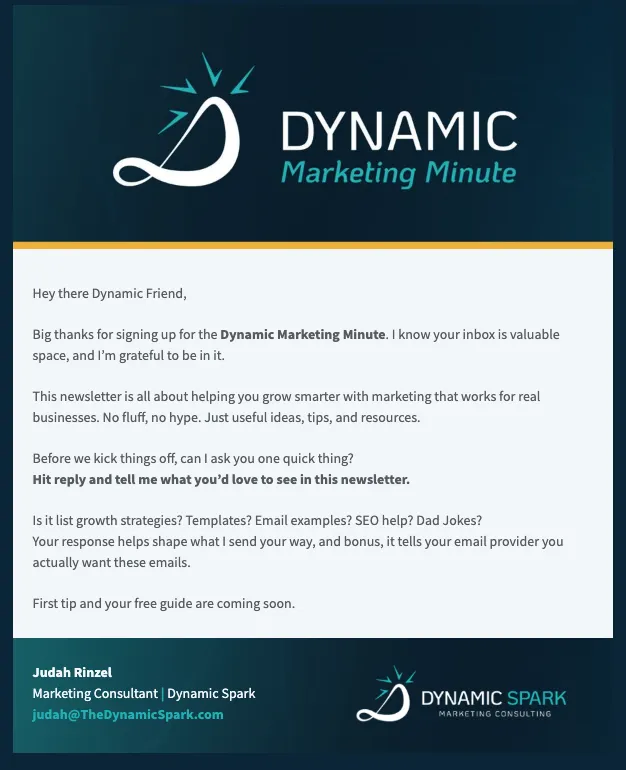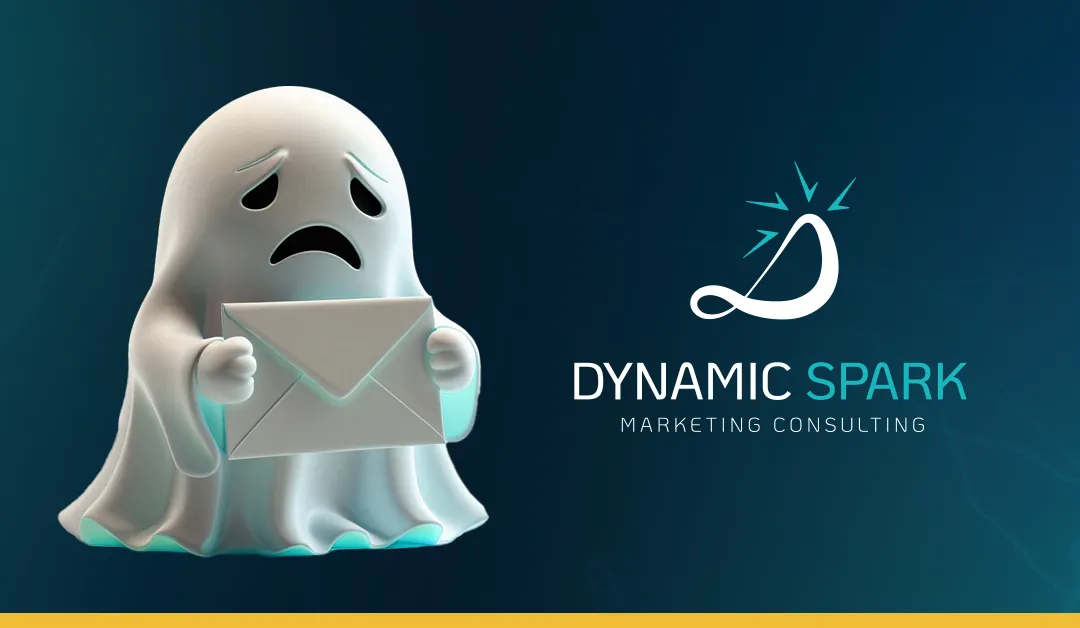
by Judah | Jun 27, 2025 | Business Strategy, Email Marketing & Automation, Marketing, Small Business Growth
Ever Feel Like Your Email Newsletter is Getting Ghosted?
You’ve written the perfect newsletter. It’s witty, informative, and probably includes a dad joke or two. You hit send. And then… crickets.
Before you spiral into self-doubt or blame Mercury for being in retrograde (again), let’s talk about something far more likely: your emails are going to spam. Or worse, not even making it to the inbox at all.
The issue might not be your writing. It could be email deliverability.
At Dynamic Spark, we’re passionate about helping small businesses get seen, not sent to digital purgatory. And after working in a corporate setting on email campaigns that increased open rates by 27%, click-through rates by 14% and decreasing bounce rates by over 10%, I’ve seen firsthand that sometimes a few smart tweaks can make a massive difference.
Let’s dive into 10 surprisingly common email deliverability killers and how to fix them.
Top 10 Email Deliverability Issues and How to Fix Them
1. Your Sender Reputation Is Toast
If your IP address has a reputation worse than a reality show villain, good luck making it to the inbox. Clean it up by avoiding spammy practices and watching how often you hit the same list without engagement.
2. You’re Collecting Dusty Old Emails
High bounce rate? That’s a problem. Hard bounces (invalid or non-existent addresses) and soft bounces (temporary issues like full inboxes) tell email providers that you’re spraying your list, not nurturing it. Clean your list every six months like it’s your fridge before the holidays.
3. You’ve Got Cold Feet... And Cold Emails
Still sending unsolicited emails to strangers who never opted in? That’s not edgy. That’s spammy. Try a lead generation campaign with an opt-in form instead. Or you know, be nice and ask first.
4. You’ve Been Flagged for Spam. Again.
Too many spam complaints in the past? Email providers remember. Check your platform’s report history. and check the placement of your unsubscribe button. If it’s hard to find or nonexistent, fix that before you lose more subscribers than a disappointing Netflix series.
5. Authentication? Never Heard of It.
Without SPF, DKIM, and DMARC in place, your email might as well be wearing a fake mustache and asking to be let in the club. These protocols authenticate your sender identity. Ask your web developer (or your favorite email nerd) to help set them up.
7. You’re Not Asking for the “Hi”
When someone signs up, ask them to reply to the welcome email. That one little reply tells inboxes you’re not a bot selling fake sunglasses. It also starts a real human connection. Want to go next level? Ask a question in your welcome email: “What kind of content do you want to see from us?” or “What problem are you hoping we can help you solve?”
8. You’re Not Using a Recognizable Sender Name
Sending from “info@” or “newsletter@”? Yawn. Use your real name or a branded sender name your audience will recognize. “Judah | Dynamic Spark” is much friendlier than “no-reply@CompanyName.com.”
9. You’re Not Testing Your Emails Before Sending
Ever send something and then immediately regret it? Same. Test your emails using mail-tester.com. It’ll give you a deliverability score and tell you what’s broken (besides your heart after a 3% open rate).
10. You’re Ghosting Your List
If you only show up when you’re launching a new offer, your list will drop off like Lance Armstrong’s reputation after a drug test. Email newsletters should be consistent (weekly or monthly), not “whenever you remember you have an email list.”
The Truth About Email Marketing: It’s Not Sexy, But It Works
Social media algorithms change faster than a toddler’s mood. Your email list? That’s yours. You’re not at the mercy of Instagram’s latest “oops we messed up reach again” update.
The best way to stay top of mind? Ongoing communication. That means showing up in inboxes with consistent content that builds trust over time.
Think blog updates, helpful tips, a little storytelling, a touch of your personality, and yes, even those dad jokes if they work for your brand.
Add-On Tips Worth Stealing
Jay Schwedelson’s Favorite Hack
Ask new subscribers to reply to your welcome email. Whether it’s “Hi,” “I want all the tips,” or “My inbox is ready,” that response is inbox gold. It boosts deliverability and starts a conversation.
More Smart Stuff
- Use a recognizable sender name
- Include a clear unsubscribe button
- Segment your audience for relevancy
- Monitor engagement to avoid being flagged as irrelevant
See more free email resources from Jay at SubjectLine.com
Final Thoughts: Email Isn’t Dead, But Your Strategy Might Be
Email marketing works, if you treat it like a relationship and not a megaphone.
Looking to build or fix your welcome sequence, audit your current email strategy, or finally send newsletters that actually get opened? Let’s talk.
Or better yet…
Fill out the Website Questionnaire and let’s make email marketing your secret weapon.
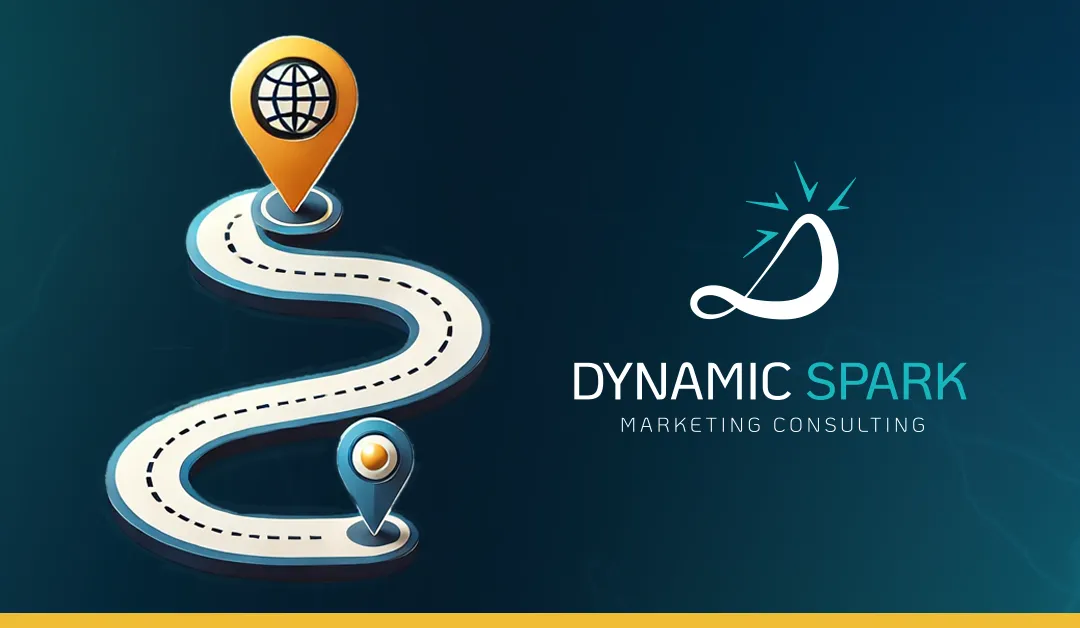
by Judah | May 29, 2025 | Email Marketing & Automation, Lead Generation & Nurturing, SEO & Online Visibility, Small Business Growth, Web Design & Development
Building a website without a growth plan is like hitting the road on a family trip with your kids with: no snacks, no entertainment, no mobile data, and of course, the check engine light flicks on halfway through hour one. You’ll get somewhere… but not without chaos, complaints, and maybe a little emotional damage.
So, What Is a Website Growth Plan?
A website growth plan is a strategic roadmap designed to grow your online presence and generate leads. It goes beyond “make it look good” and into “make it work hard.” It combines content, SEO, lead capture, email marketing, and more to align your website with your business goals (Note: If these terms are a little foreign to you, visit the Marketing & Website Terms Made Simple page).
Think of it as what Walter White was to Breaking Bad, methodical, precise, a little gritty, and highly calculated (minus the moral decay).
Here’s what a typical website growth plan might include:
-
Location-Specific SEO Pages: These help you show up when someone types “[your service] near me” and doesn’t want to scroll past Yelp.
-
Keyword Research & Organic SEO: Instead of guessing what your customers search for, we research it and bake those terms right into your content.
-
Strategic FAQs: Because if people keep asking, your site should be answering.
-
Content Marketing via Blogs: Useful, helpful, and optimized for search engines.
-
Lead Magnets: Irresistible downloads or freebies that get visitors to say, “Yeah, I’ll trade my email for that.”
-
Email Follow-Up Series: Think of this as the nurturing sequence that gently guides leads toward working with you.
-
Monthly E-Newsletter: Ongoing education that keeps your brand top of mind and helps potential customers without being pushy.
Learn more about what is included in our Website Growth plans.
Why I’m Building My Own Growth Plan (and What I’ve Learned)
After a corporate downsizing, I took my 10+ years of experience in corporate marketing and stepped into building my own business. I thought my freelance website was a head start, but I quickly realized I had to go deeper and create something that truly aligned with my goals and the audience I wanted to reach.
I’m currently developing that strategy, creating content, crafting lead magnets, planning email series, and writing blogs just like this one to support other small businesses navigating the same waters.
This isn’t just theory. It’s the very approach I’m using to grow Dynamic Spark, and it’s the kind of strategy I can help you implement too.
What Happens If You Don’t Have a Website Growth Plan?
You might still have a website that looks decent. You might get a few inquiries. But you’re probably also:
-
Missing out on search traffic.
-
Not capturing leads.
-
Wasting time with dead-end marketing.
-
Feeling like you’re throwing digital spaghetti at the wall to see what sticks.
That’s where a strategy saves you.
Your website should be working around the clock to get results. But without the right intel, it’s just shouting into the void while the real action happens somewhere else. In short: it starts doing what you actually built it for.
Ready to Build Your Growth Plan?
If your website is coasting and you’re ready for it to start pulling its weight, let’s get moving. Start by filling out this quick questionnaire and let’s figure out how to make your site do more than just sit there looking pretty.
Fill out the Website Questionnaire
It’s fast. It’s strategic. And it’s one step closer to clarity.
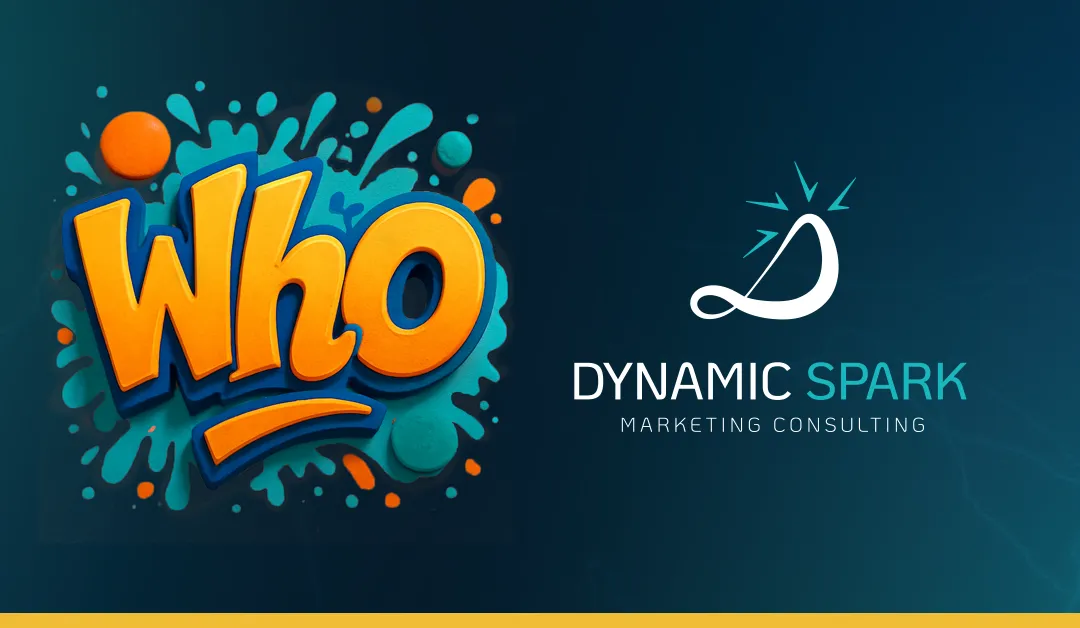
by Judah | Apr 26, 2025 | Content Marketing Tips, Marketing, Small Business Growth
What Can a 2000s Rapper Teach You About Marketing? More Than You Think!
Before I dive in, let’s get one thing straight: I am not endorsing Mike Jones’ music—unless, of course, you enjoy lyrics that make your grandma clutch her pearls. This post is strictly about marketing brilliance, not questionable life choices.
Ok, let’s talk about Mike Jones. Who? Mike Jones.
No, not your neighbor. Not your accountant. THE Mike Jones. The Houston rapper who, despite having the lyrical depth of a kiddie pool, somehow made his name unforgettable.
I mean, I’ve been dating my girlfriend for several years now, and I still don’t know her phone number. But if you ask me right now for Mike Jones’ digits, I’ll drop 281-330-8004 faster than you can say “flip phone.”
What Made Mike Jones Unforgettable? Repetition.
Mike Jones had a marketing strategy so simple yet so effective it should be in textbooks. He repeated his name and phone number so many times in his songs that it became impossible to forget.
It’s the same reason why jingles like “Nationwide is on your side” or “I’m lovin’ it” are burned into your brain forever. Repetition = brand recognition.
Your Business Needs a “Mike Jones” Moment
If people don’t remember who you are or what you do, it’s not because they’re dumb—it’s because you haven’t told them enough times.
Think about it:
-
- You post on social media once and expect people to remember your business? Nope.
- You introduce your brand once and assume clients will call? Think again.
- You explain your services once and think they get it? Spoiler alert: They don’t.
In marketing, it takes an average of 8-12 touchpoints before a customer makes a purchase. (And let’s be honest—if Mike Jones had only said his name once, we wouldn’t be having this conversation.)
How to Be More Like Mike (Marketing Edition)
1. Repeat Your Core Message
What do you do? Who do you help? Say it. Then say it again. Then say it when people are sick of hearing it. That’s when they finally start remembering.
2. Be Easy to Remember
Mike Jones didn’t go by Michael Q. Jones, CPA—he kept it simple. Your brand messaging should be just as catchy. A memorable tagline, slogan, or value statement goes a long way.
3. Make It Easy to Find You
Mike Jones literally gave out his phone number in every song. Are you hiding behind an outdated contact form and a website that loads slower than dial-up. Fix that.
4. Be Consistent Across Platforms
Mike Jones didn’t switch it up—same name, same number, every time. If your brand voice sounds different on Instagram, LinkedIn, and your website, you’re confusing people. Keep it consistent.
5. Show Up More Often Than You Think You Need To
Mike Jones didn’t just mention his name once per album—he said it in every song. You need to show up regularly in front of your audience through blogs, social media, and email marketing.
Final Thought: Will People Remember You?
Mike Jones turned a simple marketing strategy into a lasting legacy (and let’s be honest—he did it without Facebook ads, SEO, or Google Analytics).
So, here’s the real question: If a 2000s rapper can make millions of people remember his name and phone number, what’s stopping your business from being unforgettable?
Want to keep your marketing on point? Subscribe to my newsletter (Or just refresh the page and fill out the info in the popup :).
Need help crafting a brand people won’t forget? Let’s talk.
Now go forth and channel your inner Mike Jones—minus the questionable lyrics.

by Judah | Mar 26, 2025 | Digital Marketing Strategies, Lead Generation & Nurturing, SEO & Online Visibility, Small Business Growth, Web Design & Development, Website Maintenance & Optimization
So, you’re thinking about building your own website. How hard can it be? It’s like cutting your own hair—you can do it, but you might not want to show anyone the results.
DIY website builders promise you’ll have a site up in minutes. Just drag, drop, and poof—you’re the next digital entrepreneur. But here’s the problem: looking “done” and looking professional are two very different things.
Meanwhile, a professionally designed website isn’t just there to look pretty. It’s a 24/7 sales rep, working to convert visitors into customers while you sleep. So, let’s break down the real difference between a DIY site and one built by someone who actually knows what they’re doing.
1. First Impressions: Is Your Website Scaring Away Customers?
Your website has about 3 seconds to impress visitors before they leave faster than a cat avoiding bath time.
DIY Website Struggles:
❌ Generic templates that make your site blend into a sea of mediocrity
❌ Confusing layouts where visitors have no clue where to click
❌ Font choices that scream “designed by my cousin who took a graphic design class in 2008.”
What a Pro Designer Does:
✔ Creates a custom, on-brand design that makes you look legit
✔ Optimizes layout and visuals to keep visitors engaged
✔ Designs for mobile first (because over 60% of your traffic is coming from phones)
The Hidden Cost of DIY Websites: If your site looks unprofessional, people assume your business is, too. That means lost trust, lost credibility, and lost sales.
2. SEO: Can Google Even Find Your Site, Bro?
If your website exists but isn’t ranking on Google, does it even exist?
DIY SEO Nightmares:
🔍 Slow loading speeds—Google hates slow sites, and so does everyone else
🔍 No keyword strategy—just hoping people “stumble upon” your site
🔍 No mobile optimization—Fun fact: Google ranks mobile-friendly sites higher
What a Pro Designer Does:
✔ Improves page speed so visitors (and Google) stick around
✔ Optimizes for the right keywords so you actually show up in search results
✔ Builds a mobile-first site to help improve user-experience
Hidden Cost of DIY: If Google doesn’t rank your site, your competitors are stealing your traffic.
3. User Experience: Is Your Site Annoying People?
Nothing says untrustworthy business like a broken contact form or a checkout page that mysteriously deletes everything right before purchase.
DIY Website Fails:
🤦 Links that go nowhere or worse, to an error page
🤦 No clear call-to-action so visitors leave without taking action
🤦 Navigation so confusing that users need a map and compass
What a Pro Designer Does:
✔ Ensures everything actually works (crazy concept, right?)
✔ Guides visitors toward taking action (like booking a call or buying a product)
✔ Makes navigation smooth & intuitive (so people don’t rage-quit)
Hidden Cost of DIY: If users can’t easily navigate your site, they’ll leave. And guess what? They’re not coming back.
4. Security & Maintenance: Hackers Love DIY Websites
Think hackers only go after big companies? False. Small business websites get hacked every day because they often lack basic security.
DIY Website Weaknesses:
🔓 No regular updates or security patches
🔓 Weak protection against malware and cyberattacks
🔓 No backups—so if something breaks, good luck
What a Pro Designer Does:
✔ Sets up proper security measures to keep your site safe
✔ Monitors & updates regularly with a Website Support Plan so you don’t have to
✔ Ensures your site gets backed up—because disasters happen
Hidden Cost of DIY: If your site gets hacked, you could lose business, credibility, and SEO rankings overnight.
5. Lead Generation: Is Your Website Just Sitting There?
Your website shouldn’t just sit around looking pretty—it should be bringing in leads and sales.
DIY Lead Gen Fails:
❌ No clear call to action—so visitors leave without converting
❌ No trust-building elements—so visitors lack reassurance you’re legit
❌ No lead capture system—so you’re missing out on potential customers
What a Pro Designer Does:
✔ Creates clear, action-driven pages that turn visitors into buyers
✔ Uses social proof & credibility markers like testimonials and case studies
✔ Builds in lead capture tools to grow your email list & customer base
Hidden Cost of DIY: If your website isn’t converting visitors, you’re leaving money on the table.
The Real Cost of a DIY Website vs. a Professional Site
Let’s break it down:
💻 DIY Website:
✔ Cheaper upfront (woohoo!)
✔ You get full control (even if you don’t know what you’re doing)
❌ Looks generic
❌ Ranks poorly on Google
❌ Frustrates visitors (who leave without buying)
❌ Vulnerable to security risks
❌ Ends up costing you more in lost sales
🚀 Professional Website:
❌ Costs more upfront
❌ Limited control on how to build or make changes
✔ Designed to convert visitors into customers
✔ SEO-friendly (so people actually find you)
✔ Loads fast, works seamlessly, and builds trust
✔ Saves you time, stress, and lost revenue
✔ Is an investment in your business growth
The Verdict: DIY or Pro?
You can build your own website—just like you can fix your own plumbing. But when your DIY project ends up costing you more time, money, and customers… was it really worth it?
If you’re ready to invest in a website that actually works, let’s talk.
Contact us today!
Or… you could spend the next three weekends Googling “why does my website look weird on mobile?”
Your call. 😉
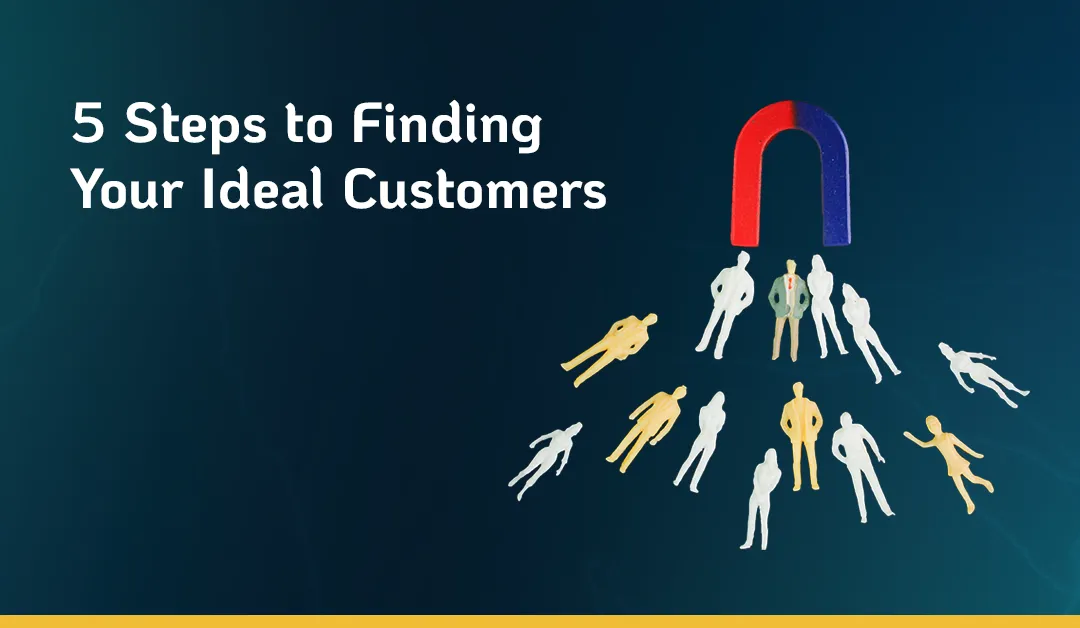
by Judah | Feb 19, 2025 | Digital Marketing Strategies, Lead Generation & Nurturing, Small Business Growth, StoryBrand Marketing Framework
Have you ever felt like you’re marketing to everyone but selling to no one? You’re not alone. Many businesses fall into the trap of casting a wide net, hoping to catch anyone with a pulse and a wallet. But here’s the truth: not all customers are created equal. Some will love you, some will ghost you, and some will make you question your life choices.
That’s where the 80/20 principle comes in. It tells us that 20% of your customers drive 80% of your revenue. That means a large chunk of your clientele may be draining your time and energy without giving much in return. So, instead of chasing the wrong crowd, let’s zero in on those golden customers who truly value what you bring to the table.
Here’s how you do it in five steps:
Step 1: Identify Your Ideal Customer (a.k.a. Your Business Soulmate)
Before you go looking for your dream clients, you need to know what they look like. Think of it like online dating—would you rather swipe right on everyone or focus on the people who actually share your interests? (No judgment if you’re into the chaos of random matches.)
Start by listing characteristics that make someone an ideal client or what may be red flag—those nightmare clients you want to avoid. Here are some of mine.
Traits of an Ideal Customer
✔ Has a clear vision but needs expert help to execute it
✔ Wants to grow and values expertise
✔ Looking for a collaborative partnership
✔ Values quality over the cheapest option
✔ Understands that marketing is an investment, not an expense
✔ Respects your time and expertise
Red Flags to Avoid
✔ Only focused on price, not long-term value
✔ Micromanages every detail and ignores expert advice
✔ Disrespects time and lacks patience
✔ Expects overnight results
By knowing who you want and who you don’t, you’ll save yourself endless headaches.
Step 2: Categorize Your Ideal Customers (Because Not All Heroes Wear Capes)
Your best clients likely fall into different personas. Here are a few types I choose to focus on for my business.
Dynamic Spark Customer Personas
- The Overwhelmed Business Owner – Wears too many hats, desperately needs marketing help, but doesn’t know where to start.
- The Growth-Minded Leader – Understands marketing’s ROI and is ready to invest in scaling their business.
- The Visionary Entrepreneur – Has big ideas and wants a brand that reflects their high standards and uniqueness.
By categorizing your customers, you can tailor your messaging and services to better meet their specific needs.
Step 3: Attract Them with a Lead Magnet (and a Dedicated Landing Page)
Now that you know who you’re looking for, you need a way to attract them. Enter the Lead Magnet—a free resource that provides value in exchange for their contact info.
Example Lead Magnet: “Small Business Marketing Survival Guide”
Mine includes:
✔ A step-by-step guide to prioritizing marketing tasks
✔ A checklist of website and branding must-haves
✔ Time-saving marketing automation tips
✔ Common small business marketing mistakes (and how to fix them)
But here’s where many businesses go wrong: They don’t create a dedicated landing page.
Why a Landing Page Matters
A landing page is laser-focused on one goal—getting the visitor to sign up for your Lead Magnet. No distractions, no competing calls to action, just a clear message about the value they’ll get. Here’s why it’s essential:
✔ Increases conversions—A single, focused page converts better than a generic website page
✔ Improves ad performance—When paired with targeted social media or Google Ads
✔ Makes tracking easier—So you can see exactly how well your lead magnet is performing
✔ Enhances credibility—A professional landing page signals that you’re serious about your business
Step 4: Nurture Your Leads (Because Nobody Likes a Pushy Salesperson)
Once someone downloads your Lead Magnet, don’t leave them hanging. A well-crafted lead nurture sequence can turn a curious visitor into a loyal client.
A Simple Lead Nurture Email Sequence
- Deliver the lead magnet—Immediate value = good first impression
- Define Your Purpose—Share your story and why you’re passionate about helping businesses grow.
- Identify a Common Problem + Offer a Solution—Show how your services can eliminate their biggest struggles.
- Customer Testimonial—Nothing builds trust like proof from happy clients.
- Paradigm Shift—Address past frustrations they may have had with similar services and show how you’re different.
- The Offer—Now’s the time to present your solution and invite them to take the next step.
By warming up your leads, you turn potential clients into paying clients without resorting to spammy tactics.
Step 5: Get the Word Out (a.k.a. Smart Advertising)
Now that everything is in place, you need to get eyeballs on your lead magnet.
Traffic Strategies for Lead Magnets
✔ Run targeted ads on Google and social media, using your defined customer personas
✔ Leverage organic marketing through social media posts, blog content, SEO
✔ Utilize partnerships by collaborate with complementary businesses for cross-promotion
✔ Place it on your website with strategic call-to-actions throughout
The goal? Get the right people to see your lead magnet, sign up, and enter your nurture sequence. Done right, this creates a self-sustaining cycle of attracting, engaging, and converting ideal customers.
Final Thoughts: Are You Attracting the Right Customers?
If your marketing feels like a game of chance, it’s time to get strategic. By identifying, attracting, and nurturing the right leads, you’ll build a business with clients who value what you do—instead of wasting energy on the wrong ones.
🔹 Want to see this in action? Download my lead magnet and experience the process firsthand!
🔹 Ready to refine your strategy? Let’s chat—schedule a consultation today.
Your ideal customers are out there—you just need the right strategy to find them!

